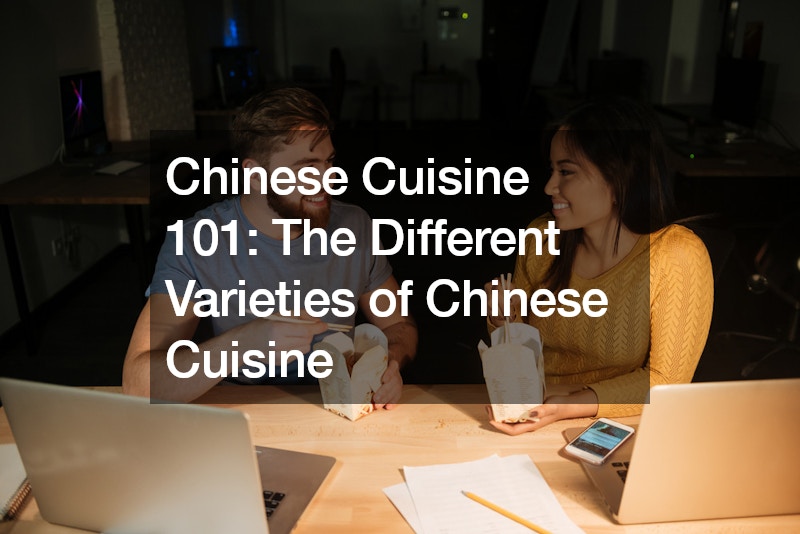Chinese cuisine is not just a meal; it’s a journey through history and culture. From the northern regions, where hearty wheat-based dishes dominate the table, to the southern coastlines teeming with seafood delights, China’s culinary landscape is as diverse as its geography. Each region boasts its culinary treasures, shaped by local ingredients, climate, and cultural influences.
In this comprehensive guide to Chinese cuisine, we delve into the intricacies of authentic regional cooking, celebrating the unique flavors and traditions that define each area’s gastronomic identity. Whether it’s the bold and fiery dishes of Sichuan, the delicate flavors of Cantonese cuisine, or the aromatic spices of Yunnan, there’s something to tantalize every palate.
Join us on a culinary adventure as we explore the rich tapestry of Chinese cuisine, uncovering the secrets behind beloved dishes and discovering the stories woven into each bite. From street food stalls to fine dining establishments, the flavors of China are as diverse and vibrant as the country itself, offering a taste of tradition, culture, and history with every mouthful.
Northern Cuisine:
Northern Chinese cuisine is renowned for its hearty and warming dishes, influenced by the region’s cold climate and agricultural abundance. Wheat-based staples like noodles, dumplings, and steamed buns are prominent, providing a satisfying foundation for many dishes. Hand-pulled noodles are a hallmark of northern cuisine, prized for their chewy texture and versatility. Dumplings are another cherished specialty, featuring delicate wrappers filled with flavorful combinations of meat and vegetables. Beijing roast duck, with its crispy skin and succulent meat, is an iconic dish that captivates the senses. Lastly, hearty soups simmered with meat, vegetables, and spices provide nourishment and warmth during chilly winters.
Southern Cuisine:
Southern Chinese cuisine is characterized by its bold and diverse flavors, influenced by the region’s proximity to the sea and subtropical climate. Rice is the staple grain, and seafood, fresh vegetables, and tropical fruits feature prominently in dishes. Cantonese cuisine, originating from the Guangdong province, is known for its delicate flavors, seafood dishes, and dim sum. Other regional cuisines in the south, such as Fujian and Hakka, offer a rich tapestry of flavors, with dishes ranging from braised meats to steamed fish and vegetable stir-fries. These cuisines showcase the bounty of the region’s land and sea, with dishes that celebrate freshness and flavor diversity.
Eastern Cuisine:
Eastern Chinese cuisine, centered around the fertile Yangtze River Delta, emphasizes fresh ingredients and light, delicate flavors. Abundant freshwater fish and seafood from the region’s rivers and waterways feature prominently in dishes. Sweet and sour flavors are common, as are dishes cooked with soy sauce, vinegar, and sugar. Shanghai cuisine, known for its sophisticated flavors and elegant presentation, is a standout example of eastern Chinese cuisine. Braised pork belly, drunken chicken, and Shanghai-style soup dumplings are popular dishes that exemplify the region’s culinary heritage.
Western Cuisine:
Western Chinese cuisine, encompassing provinces like Sichuan, Hunan, and Yunnan, is renowned for its bold, spicy flavors and aromatic spices. Sichuan cuisine, famous for its fiery dishes flavored with Sichuan peppercorns and chili peppers, includes mapo tofu and kung pao chicken. Hunan cuisine features smoked and cured meats with sour and spicy flavors. Yunnan cuisine, influenced by diverse ethnic groups, offers a wide variety of ingredients like mushrooms and edible flowers. These regional cuisines showcase the diversity and complexity of Chinese culinary traditions, with dishes that excite the palate and stimulate the senses.
Chinese Cuisine in the UK:
Chinese cuisine in the UK reflects the country’s rich cultural diversity and vibrant culinary scene. With a long history of Chinese migration to the UK, Chinese cuisine has become an integral part of British gastronomy. From bustling Chinatowns in cities like London, Manchester, and Birmingham to local Chinese takeaways in every corner of the country, Britons have embraced the flavors of authentic Chinese cooking.
In the UK, you’ll find a wide range of regional Chinese cuisines, from Cantonese and Sichuan to Hunan and Fujian. Each region offers its unique specialties, ranging from dim sum and crispy aromatic duck to spicy Sichuan hot pots and comforting noodle soups. Many Chinese restaurants in the UK also cater to diverse tastes, offering vegetarian and vegan options alongside classic meat and seafood dishes.
Moreover, Chinese cuisine in the UK has evolved to incorporate British influences, resulting in dishes like sweet and sour chicken, crispy beef, and chow mein that are tailored to British palates. Whether dining out at a fine-dining Chinese restaurant or ordering a takeaway for a cozy night in, experiencing Chinese cuisine in the UK is a culinary adventure that continues to captivate food lovers across the country.
In conclusion, authentic Chinese cuisine is a testament to the rich tapestry of flavors, ingredients, and culinary artistry that has evolved over centuries. It’s a journey through China’s diverse landscapes and cultural heritage, where each region contributes its unique culinary treasures to the table.
Whether you’re warming up with hearty northern dishes or indulging in the delicate flavors of southern cuisine, every bite tells a story of tradition and innovation. From the bustling streets of Shanghai to the tranquil rice paddies of Guangxi, there’s a world of culinary delights waiting to be explored.
So, the next time you’re craving a taste of China, why not venture beyond the familiar and immerse yourself in the authentic flavors of its diverse regions? Whether you’re sampling street food in Chengdu or dining in a Michelin-starred restaurant in Hong Kong, you’re sure to be captivated by the depth and complexity of Chinese cuisine. So go ahead, embark on a culinary adventure, and discover the true essence of Chinese gastronomy.
.


